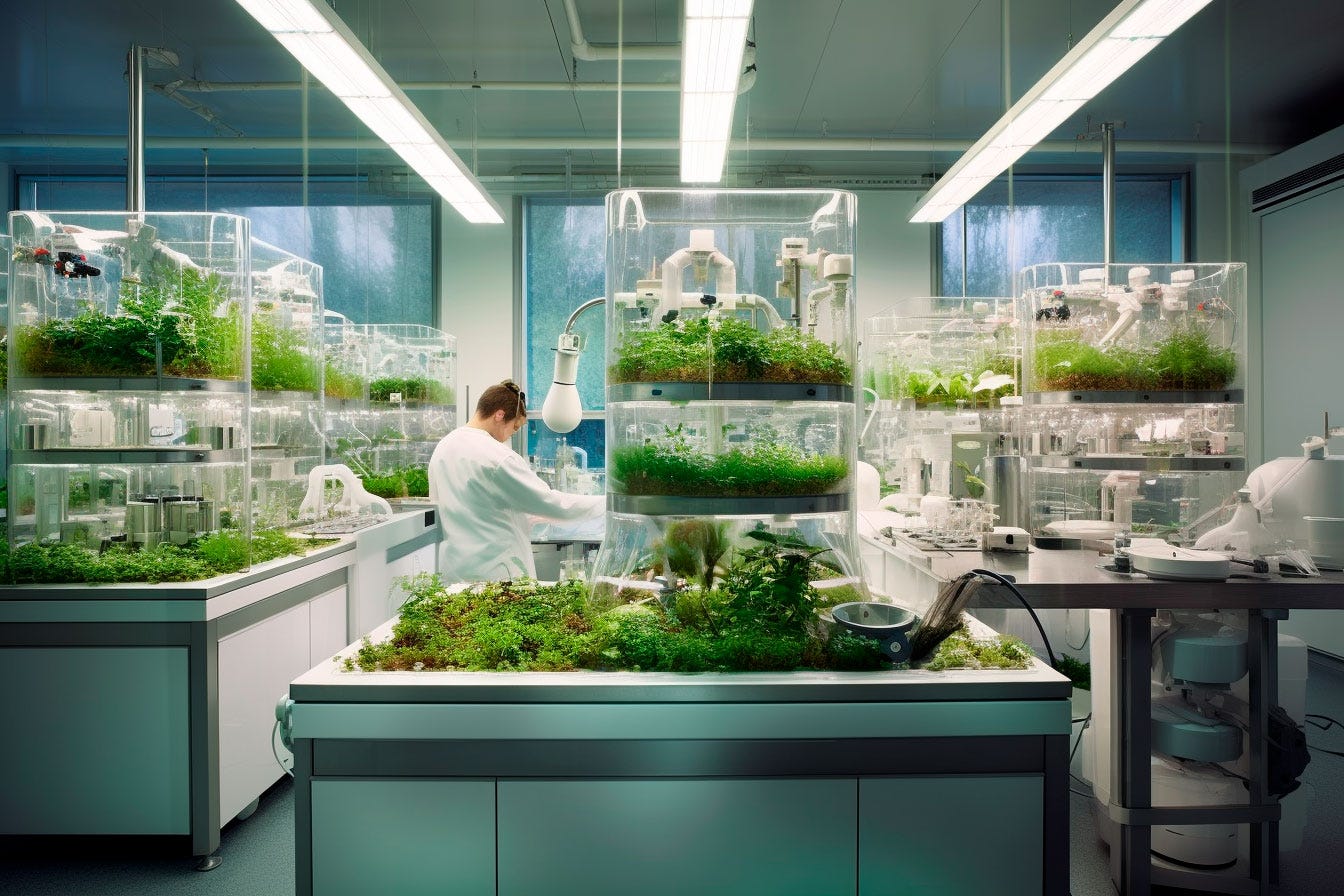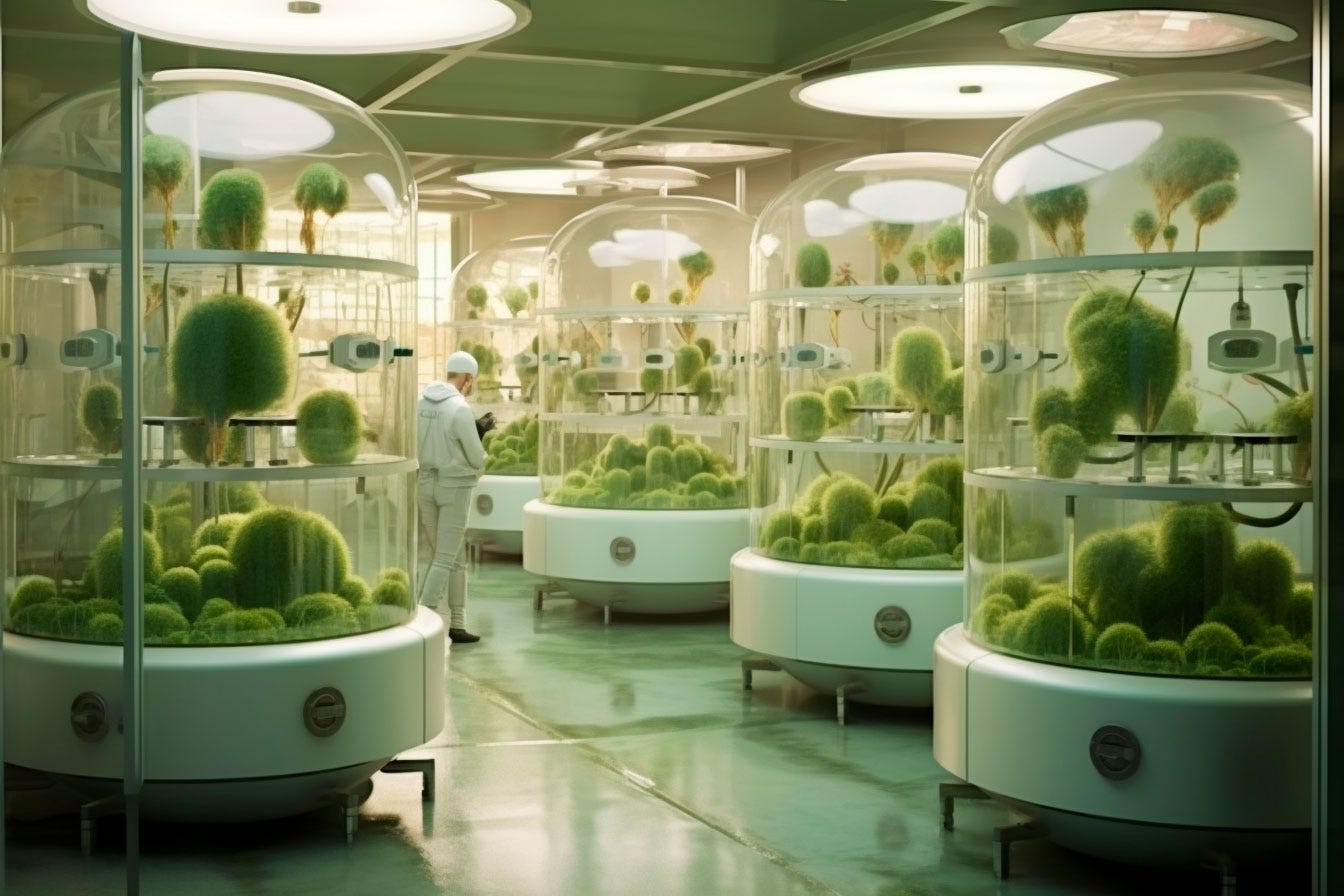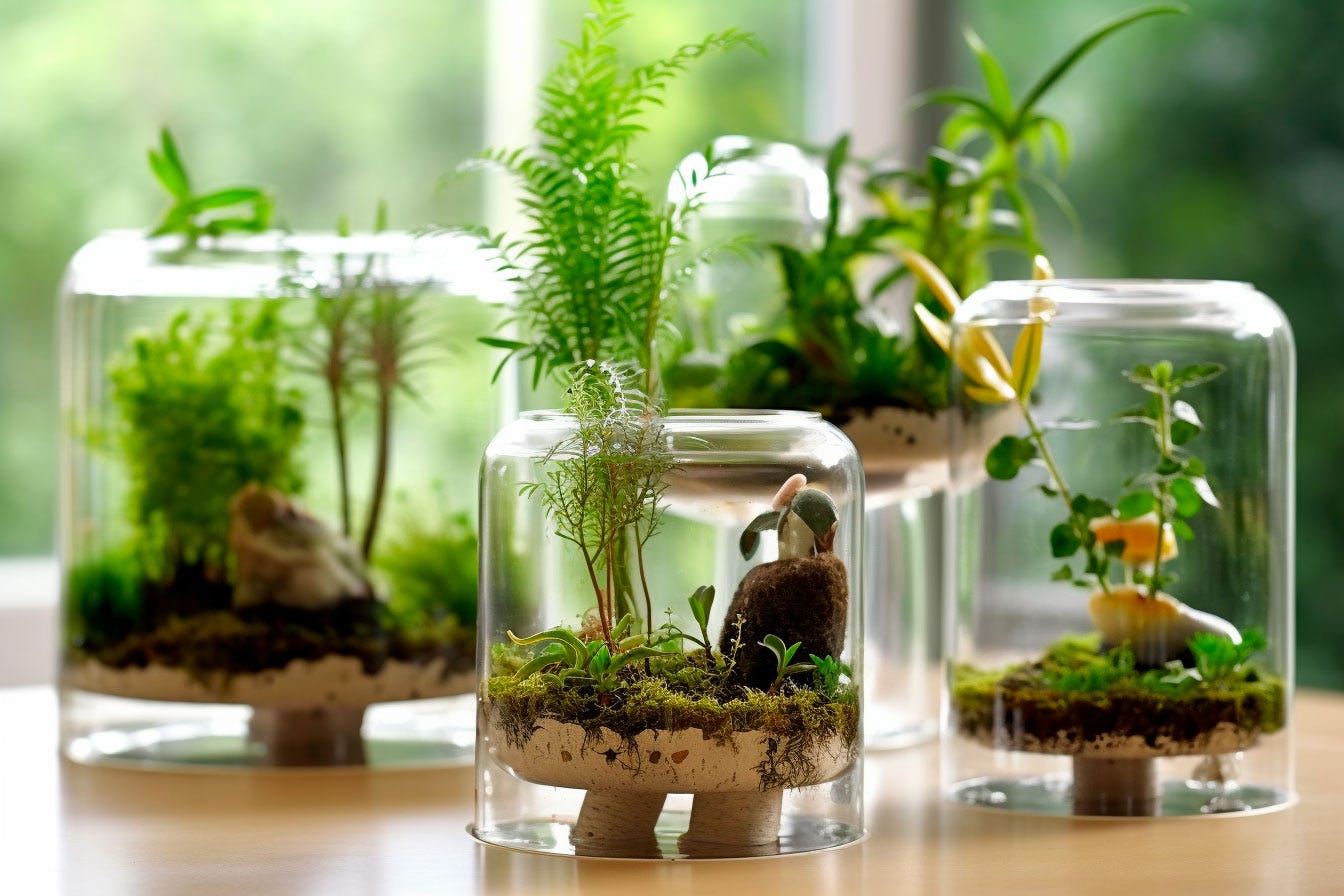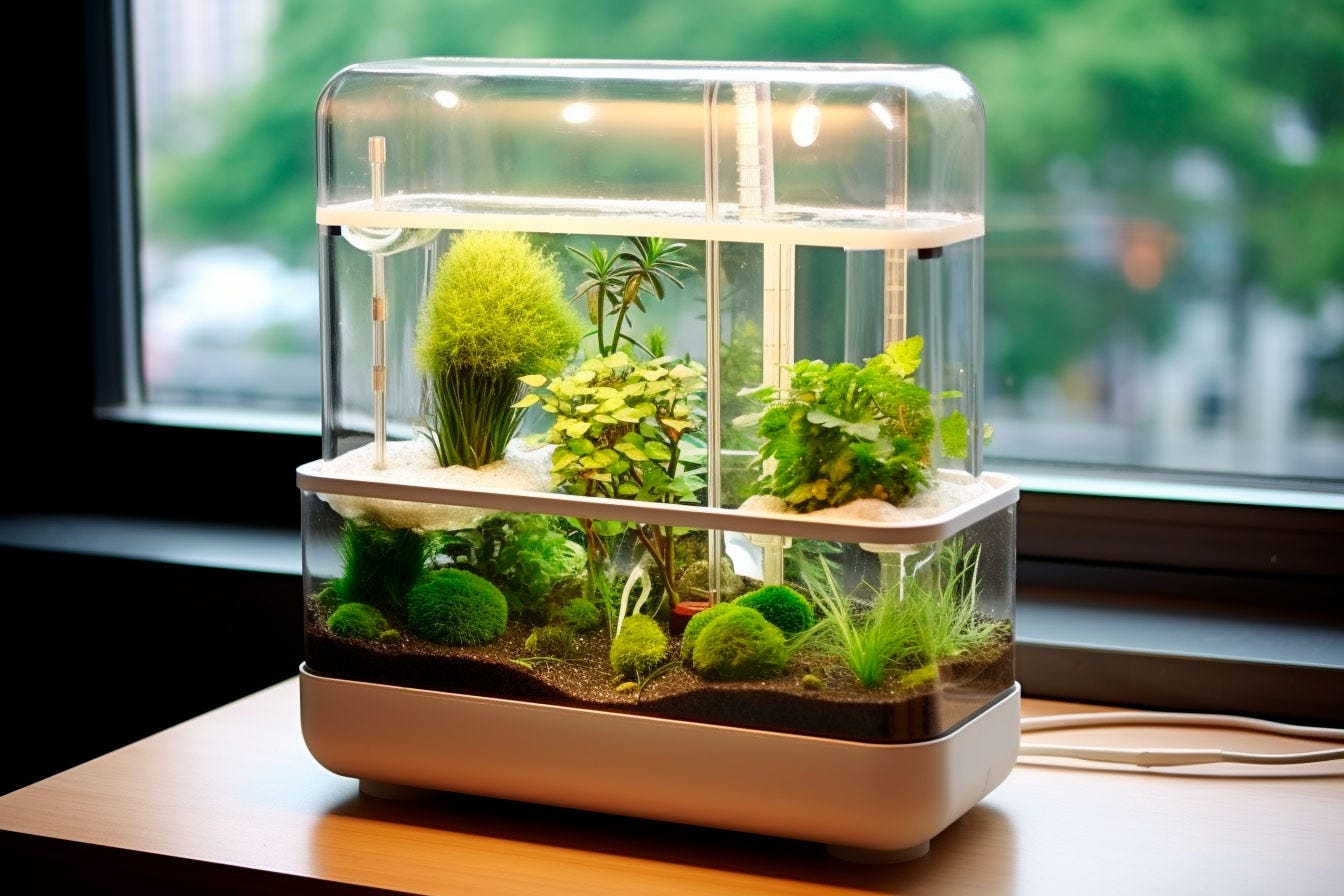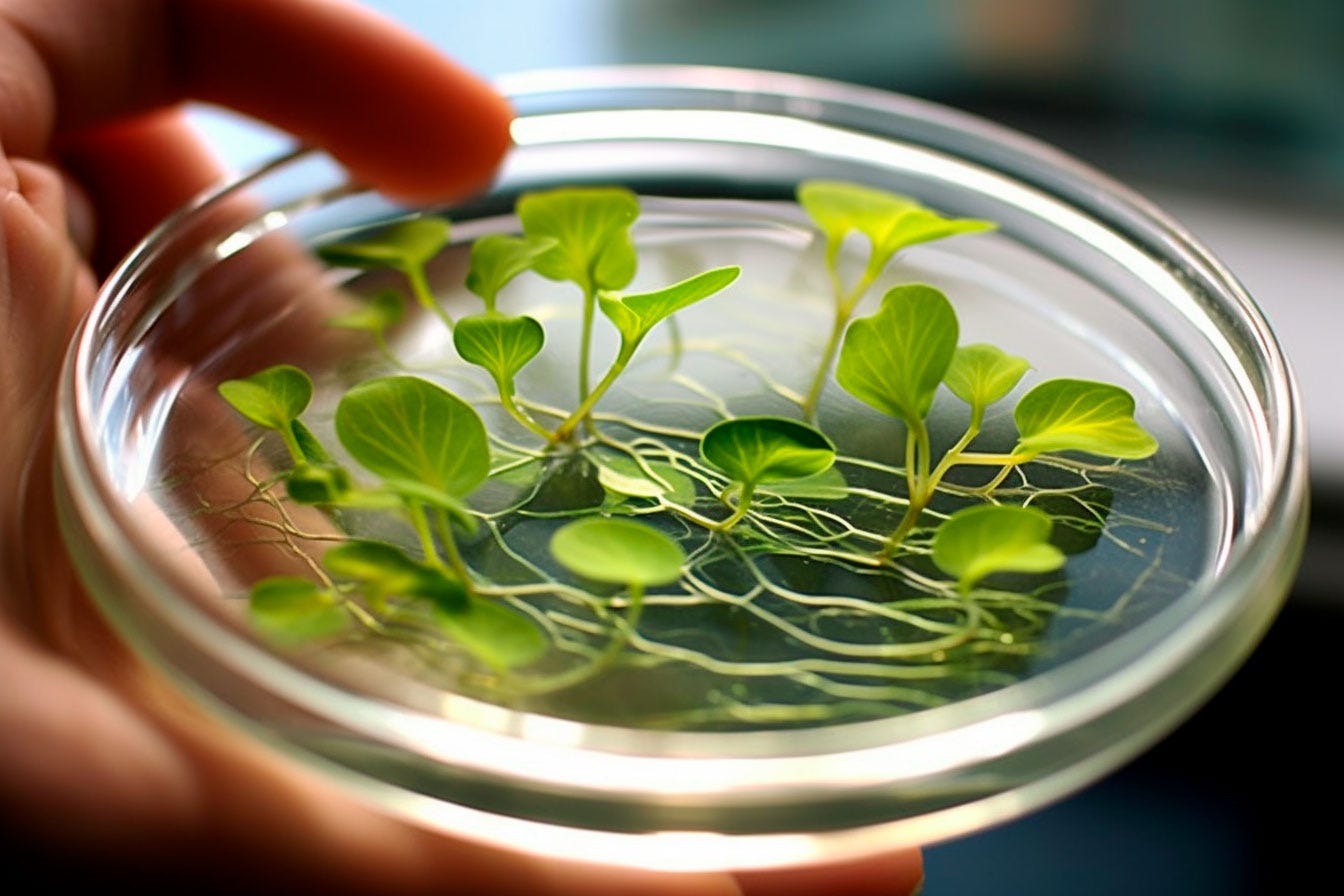Unlocking Plant Propagation: Exploring Tissue Culture, Micropropagation, and Home-based Techniques
From Disease-Free Plants to Endangered Species Preservation - A Comprehensive Guide for Home Gardeners
Hello, my fellow plant lover!
On this occasion, I will delve into the process of tissue culture and micropropagation, exploring their applications, advantages, and potential in plant conservation. Most importantly, I will guide you on how to unlock their full potential and implement these techniques in your private plant nursery at home.
Embark on a journey of horticultural mastery as we unlock together the secrets of advanced plant cultivation. In this captivating section called Mastery, I delve into the world of cutting-edge techniques, innovative approaches, and expert insights that will elevate your plant cultivation skills to new heights. Join me as I explore the forefront of horticulture and empower you with the knowledge to achieve extraordinary results in your own green oasis.
Let's unlock these secrets together!
Short in time? Here’s a summary of the newsletter today:
Tissue culture and micropropagation revolutionize plant propagation by growing plants in aseptic conditions from small tissue samples. 🌱🔬
Benefits include mass production of disease-free plants and preservation of endangered species. 🚀🌿
Tissue culture cultivates plant cells in a controlled environment, while micropropagation rapidly multiplies plants on a large scale. 🧪🌱
Advantages: mass production for agriculture and reforestation, disease-free plants, preservation of germplasm, genetic improvement. 🌾🦠
Tissue culture helps conserve endangered species and aids in habitat restoration. 🌍🐾
Home gardeners can adapt aspects of tissue culture with a simplified step-by-step guide. 🏡🌱
Steps include gathering materials, sterilizing plant tissue, culturing, maintenance, transplanting, and proper care. 🧪🌱👩🌾
Sterility and precision are crucial for successful home-based tissue culture. 🧤🔬
Understanding Tissue Culture and Micropropagation
Tissue culture and micropropagation have revolutionized the field of plant propagation by enabling the growth of plants in aseptic conditions from small tissue samples. These techniques offer numerous benefits, including the mass production of disease-free plants and the preservation of endangered species.
Tissue culture involves the cultivation of plant cells, tissues, or organs in a laboratory environment under controlled conditions. It begins with the collection of plant tissue samples, which can be as small as a few cells. These samples are then placed in a nutrient-rich medium containing essential minerals, vitamins, sugars, and growth regulators. By manipulating these growth factors, scientists can induce cell division, organogenesis, and ultimately the formation of whole plants.
Micropropagation, a subset of tissue culture, refers specifically to the propagation of plants on a large scale through the rapid multiplication of plant material. It offers an efficient method of clonal propagation, where genetically identical plants can be produced in vast quantities within a short period.
Advantages of Tissue Culture and Micropropagation:
Mass Production: Tissue culture and micropropagation enable the rapid production of a large number of plants from a single tissue sample. This efficiency is crucial for meeting the demands of commercial agriculture, horticulture, and reforestation programs.
Disease-Free Plants: Tissue culture provides a valuable tool for the production of disease-free plants. By starting with a small tissue sample, it is possible to eliminate pathogens and viruses that may be present in the parent plant. The resulting plantlets are genetically identical to the original sample and are free from diseases, ensuring healthier and more productive crops.
Genetic Preservation: Tissue culture offers a means of preserving and propagating valuable plant germplasm. Endangered or rare species, which may be challenging to propagate through traditional methods, can be conserved by storing their tissue samples in cryopreservation banks. These preserved samples can then be used to regenerate whole plants when needed.
Genetic Improvement: Tissue culture allows for the manipulation of plant cells to induce genetic modifications. By introducing desirable traits, such as disease resistance or increased yield, scientists can create improved varieties of plants more efficiently and with greater precision than traditional breeding methods.
Applications in Plant Conservation: Tissue culture and micropropagation have proven to be invaluable tools in the conservation of endangered plant species. By taking small tissue samples from endangered plants and propagating them in vitro, scientists can create a living repository of these species, safeguarding them from extinction. The technique also facilitates the reintroduction of endangered plants into their natural habitats, aiding in habitat restoration and biodiversity conservation.
Furthermore, tissue culture enables the rescue and recovery of plant species from damaged or polluted environments. By initiating the growth of plants from tissue samples collected in contaminated areas, scientists can study their responses to environmental stressors and potentially develop strategies for ecological restoration.
Tissue culture and micropropagation have opened up new possibilities in plant propagation, offering a means to mass produce disease-free plants, preserve endangered species, and enhance genetic improvement. As technology and techniques continue to advance, tissue culture holds immense promise for meeting the challenges of food security, environmental conservation, and sustainable agriculture in the future.
Do you think that your colleague or friend would take advantage of This Is Horticulture’s paid content? Maybe it’s moment to send a Xmas present in advance!
DIY at home: A Comprehensive Guide for Home Gardeners
While tissue culture and micropropagation are complex processes typically carried out in specialized laboratories, it is possible to adapt certain aspects of these techniques for home gardeners who are interested in exploring plant propagation on a smaller scale. The following step-by-step guide provides a simplified approach to tissue culture and micropropagation that can be implemented at home. You will need to provide yourself with:
Sterilization Agents:
Rubbing alcohol: Use it to clean surfaces and tools.
Containers and Equipment:
Small plastic cups or containers: Suitable for culturing plant tissue samples.
Plastic wrap or ziplock bags: Can be used to cover the containers and create a mini-greenhouse effect.
Scissors: Use them for taking small plant tissue samples.
Growth Medium:
Agar: A gelatinous substance used as a solid growth medium. It can be found in stores or online.
Sterilization and Culturing Setup:
Clean work area: Make sure the working surface is clean and free from contaminants.
Clean hands: Wash hands thoroughly before handling plant tissue.
Lighting and Environmental Control:
Sunlight or artificial light source: Provide adequate light to the tissue culture setup.
Room temperature: Maintain a warm and stable temperature (around 20-25°C) in the tissue culture area.
Plant Material:
Healthy plant: Select a plant with desirable characteristics for tissue sampling.
Reference Materials:
Kid-friendly books or online resources: Look for resources that explain tissue culture and micropropagation in simple terms and provide step-by-step instructions suitable for kids.
Step 1: Gather Materials and Equipment
Sterile containers: Glass jars or plastic containers with lids.
Growth medium: Purchase pre-made tissue culture media or prepare your own using a recipe suitable for the plant species you wish to propagate.
Sterilizing agents: Common options include bleach or hydrogen peroxide for sterilizing equipment and plant material.
Plant tissue: Select a healthy plant with desirable characteristics. Take a small tissue sample, such as a leaf or stem tip, from the parent plant.
Step 2: Surface Sterilization
Clean the plant tissue sample by rinsing it with water to remove any debris.
Immerse the tissue sample in a sterilizing solution (e.g., a diluted bleach solution) for a specific duration (varies depending on the plant species).
Rinse the tissue sample multiple times with sterilized water to remove any traces of the sterilizing solution.
Step 3: Culturing the Tissue
Place the sterilized tissue sample onto the growth medium in a sterile container. Ensure the tissue is in contact with the medium.
Seal the container with a lid to maintain a sterile environment.
Keep the container in a warm and well-lit area, preferably under grow lights or indirect sunlight.
Step 4: Maintenance and Subculturing
Regularly monitor the tissue culture for signs of growth, such as the appearance of new shoots or roots.
Maintain the proper moisture level of the growth medium by adding sterilized water or the appropriate growth medium as needed.
Subculture the growing tissue by transferring small pieces to fresh growth medium periodically. This helps prevent overcrowding and encourages healthy growth.
Step 5: Transplanting to Soil
Once the tissue culture has developed roots and shoots, it is ready for transplantation.
Prepare small pots or trays with well-draining soil or a suitable potting mix.
Carefully remove the tissue culture from the growth medium, taking care not to damage the roots or shoots.
Gently plant the tissue culture in the soil, ensuring the roots are covered but the shoot remains above the surface.
Place the newly transplanted plants in a shaded area initially and gradually expose them to more sunlight over time.
Step 6: Care and Maintenance
Provide appropriate care to the transplanted plants, including regular watering, suitable light conditions, and proper nutrition based on the specific plant species.
Monitor for any signs of stress or disease and take necessary actions to address them.
It is essential to note that tissue culture and micropropagation require a high level of sterility and precision to achieve successful results. Adapting these techniques at home may not yield the same success rates as professional laboratories. However, this simplified approach can still provide an engaging and educational experience for home gardeners interested in exploring plant propagation.
It is recommended to consult additional resources, such as books, online tutorials, or local gardening experts, to gain a deeper understanding of tissue culture and micropropagation techniques specific to the plant species you wish to propagate.
Thanks for being a premium subscriber! 😊🙌 Please share the newsletter with your friends and colleagues to keep the community growing. 🌱👩🎨👨🎨
Plant Cultivation Business: Companies to Follow
There are many companies that specialize in tissue culture and micropropagation. Here are a few examples:
AgriStarts (US): AgriStarts is a US company that specializes in tissue culture and micropropagation for the horticulture industry. They provide high-quality plant tissue culture services, including plant propagation, germplasm preservation, and custom plant production. AgriStarts works with a variety of plant species and offers their services to both commercial growers and home gardeners.
FitzGerald Nurseries (EU): FitzGerald Nurseries is a leading plant nursery in Ireland known for their stunning plants that bring year-round color to small gardens, planters, and containers. They supply young plants to growers worldwide and offer services like new variety development and contract micro-propagation production. With their own private grounds, they rigorously test their plants to ensure the highest quality. Whether you're a plant enthusiast or looking to beautify your space, FitzGerald Nurseries is dedicated to providing exceptional plants that thrive and bring joy.
Phytocultures Ltd (UK): Phytocultures is a UK company specializing in tissue culture and micropropagation services. They work with various plant species, including ornamentals, herbs, and fruits, providing custom tissue culture solutions to meet the specific needs of their clients. Phytocultures focuses on producing high-quality, disease-free plants for commercial growers and nurseries.
Plant Health Care plc (UK): Plant Health Care is a UK-based company that offers a range of plant health solutions, including tissue culture and micropropagation services. They utilize tissue culture techniques to propagate and produce high-quality plants for agriculture, forestry, and horticulture sectors. Plant Health Care also focuses on developing and commercializing innovative plant biotechnology products.
Dümmen Orange (Netherlands): Dümmen Orange is a global company based in the Netherlands that focuses on the breeding and production of a wide range of plants, including ornamentals and cut flowers. They utilize tissue culture and micropropagation techniques for large-scale plant propagation, ensuring the production of high-quality and disease-free plants.
Ball Horticultural Company (USA): Ball Horticultural Company, headquartered in the USA, is a global leader in plant breeding and production. They employ tissue culture and micropropagation methods for mass plant propagation, contributing to the development of new plant varieties and the production of disease-free plants for the horticultural industry.
Plant Health Australia (Australia): Plant Health Australia is an organization in Australia dedicated to the protection and enhancement of plant health. They collaborate with various stakeholders, including tissue culture laboratories and nurseries, to develop and implement protocols for the tissue culture propagation of plants, particularly for the purpose of disease management and eradication.
Yara International ASA (Norway): Yara International, headquartered in Norway, is a global crop nutrition company. They utilize tissue culture and micropropagation techniques in their plant biotechnology research and development activities, focusing on crop improvement and genetic enhancement to enhance agricultural productivity and sustainability.
These are just a few examples of companies dedicated to tissue culture and micropropagation around the world. Each company may have its own specialized services and areas of expertise, catering to different sectors of the plant industry. It's important to research and reach out to these companies directly to learn more about their specific offerings and capabilities.
💭 Final Thoughts
Tissue culture and micropropagation offer an exciting and innovative approach to plant propagation. These techniques have revolutionized the field by allowing the growth of plants in aseptic conditions, leading to the mass production of disease-free plants and the preservation of endangered species. Whether you're a professional scientist or a curious kid, tissue culture and micropropagation open up a world of possibilities in plant conservation and genetic improvement. By exploring these techniques at home, you can embark on a rewarding journey of learning and experimentation.
Remember, it's not about achieving perfect results, but about enjoying the process and expanding your knowledge of the plant world. So, grab your toolkit, gather your materials, and let's delve into the fascinating world of tissue culture and micropropagation! 🌱🔬
See you next time!
Murnau




